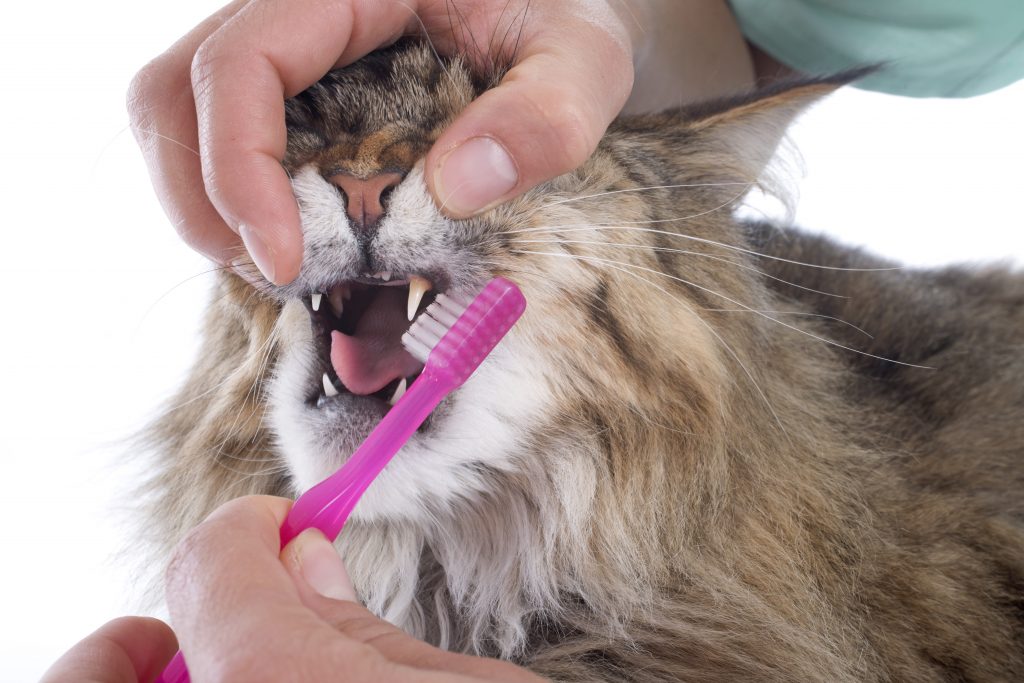Feline oral resorptive lesions are second only to periodontal disease in the incidence of oral disease. They have only been recognized for about the last 40 years, with increasing frequency starting in the 70’s. As of yet, we do not know why they occur, and there are many studies currently being performed to elucidate the cause. What we do know is that they result from the activation of cells called odontoclasts. These cells are responsible for the normal remodelling of tooth structure. In this disease process, however, they will continue to resorb tooth structure until, in some instances, the entire tooth is lost. It has been reported that 60% of cats over 6 years of age have at least one, and those that have one usually have more.
They tend to occur at and just below the gumline; however, they may only affect the root structure. The teeth most commonly affected are the premolars, followed by the molars and finally the canines. The majority of the lesions are on the buccal surface (on the outside of the tooth, against the cheek), however you can also see them on the inside.
These lesions can be excruciatingly painful, especially when they are advanced. If you probe one of the lesions even under general anesthetic, the cat will react. However, most cats will not show evidence of oral pain, even when the tooth is fractured with an exposed root canal.
Diagnosis is done by a combination of visual, tactile and radiographic means. The lesions will usually start out as little erosions along the gumline with associated inflammation of the gums in the area. They can progress to large holes in the teeth and eventually can destroy most of the tooth. In severe cases, the entire crown of the tooth can be lost, with only the roots remaining. These lesions will usually be rough when an explorer is rubbed along the suspected lesion. Dental radiology is used to diagnose lesions under the gumline, to determine the extent of the lesion, and to determine if there is any root pathology.
There are three basic methods of therapy for these lesions. These are prophylaxis and fluoride therapy, restoration (filling), and extraction. There are as many opinions on the best treatment for this condition as there are veterinarians. Some veterinarians feel that all of these teeth should be extracted, no matter how mild the disease, since the lesion is almost invariably progressive, and treatment is delaying the inevitable. In addition, as the disease progresses, the lesion will again become painful, and our feline patients don’t tend to show us pain. Other veterinarians feel that almost any of them can be restored (with or without root canal therapy), as it will give the patient at least some time (possibly life) with a functioning, pain-free tooth.
The following are the standards that I follow, which are very open to debate. If the lesion is very mild (only involving the enamel and normal on radiographs), I will clean and polish the teeth and send the owner home with fluoride gel for home use. If the disease is moderate (involving the enamel and dentin but not in the root canal), I will give the owner the option of extraction or restoration. It is not an option to ignore these lesions, as they are very painful. If it is an important tooth (upper fourth premolar, lower first molar, canine) I will lean towards restoration, if other teeth, I will lean towards extraction. The owner makes the decision to restore the tooth with the knowledge that it may eventually need to be extracted. If the root canal is involved, there has been moderate to severe crown loss, or there is root pathology present on radiographs, I will always recommend extraction. Again, these are just my standards and are open for discussion.
For more information: https://www.youtube.com/watch?v=D_uLoJ355tY





